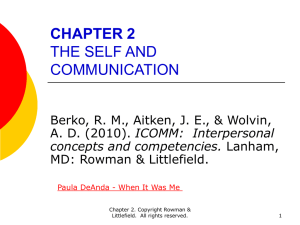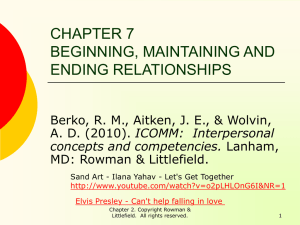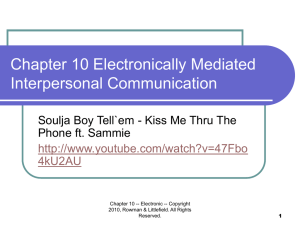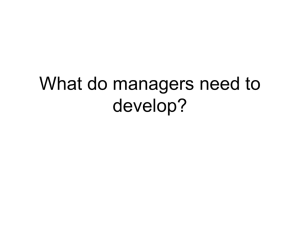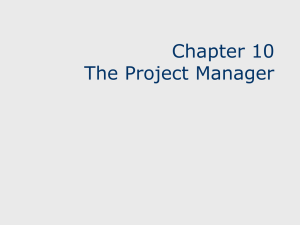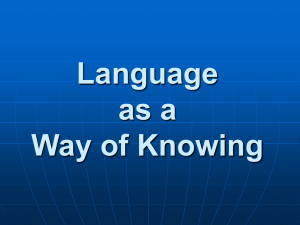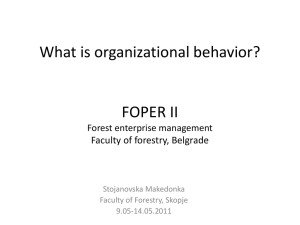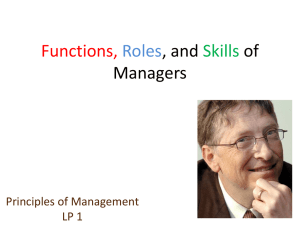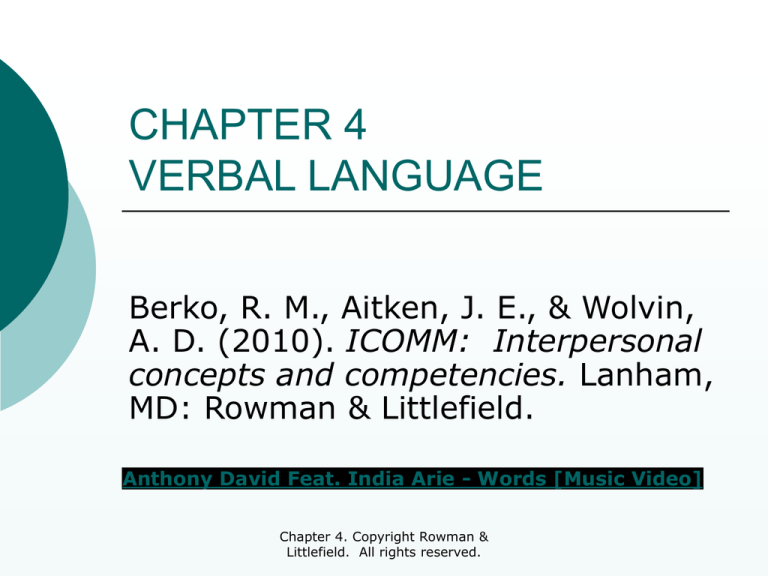
CHAPTER 4
VERBAL LANGUAGE
Berko, R. M., Aitken, J. E., & Wolvin,
A. D. (2010). ICOMM: Interpersonal
concepts and competencies. Lanham,
MD: Rowman & Littlefield.
Anthony David Feat. India Arie - Words [Music Video]
Chapter 4. Copyright Rowman &
Littlefield. All rights reserved.
Language creates a social reality
Affects the way people view the
world.
Creates rules.
Creates values about how to live
and act in a culture.
Chapter 4. Copyright Rowman &
Littlefield. All rights reserved.
What is language?
“Communication of thoughts and feelings
through a system of arbitrary signals,
such as voice sounds, gestures, or written
symbols.”
Such a system includes rules for
combining its components, such as words.
Definitions of language. (2009). The American heritage
dictionary. Retrieved from
http://dictionary.reference.com/browse/language
Chapter 4. Copyright Rowman &
Littlefield. All rights reserved.
Cybernetic Process
What do you think of the model of this model of the
Cybernetic process?
Input
Storage
Stimulus
Search
Chapter 4. Copyright Rowman &
Littlefield. All rights reserved.
Recall
Output
HOW DO YOU LEARN SYMBOLS?
http://www.toonpool.com/user/997/files/primitive_caveman_w
Chapter 4. Copyright Rowman &
ords_255475.jpg Littlefield. All rights reserved.
Language-Explosion Theory
Your language develops as a basis
from the key people in your early
life.
Your primary caregivers—such as
your mother, father, baby-sitter—
talked to you as an infant.
That interaction became the basis of
what you learned about using
language.
Chapter 4. Copyright Rowman &
Littlefield. All rights reserved.
Significant-Other Theory
Most important person in your
early development, such as your
mother, become the key influence in
your language development.
Chapter 4. Copyright Rowman &
Littlefield. All rights reserved.
Language Instinct Theory
Language is a human instinct, wired
into our brains by evolution much
like spiders spin webs.
Language is a biological
adaptation to communicate
information.
Chapter 4. Copyright Rowman &
Littlefield. All rights reserved.
Social Construct of Reality Theory
Our words and language shape the way
we view the world.
Sapir-Whorf Hypothesis reinforces the
concept of social reality in that it states
that the language we use guides how we
see and interpret the environment and
helps shape our ideas.
Argot, a jargon or slang which is a
special vocabulary that mirrors
experiences.
Chapter 4. Copyright Rowman &
Littlefield. All rights reserved.
Write this down
Write a list of the ten most common
languages of the world (by number
of people who speak the language).
Chapter 4. Copyright Rowman &
Littlefield. All rights reserved.
Then find an Internet site that names the most
frequently spoken
languages. http://anthro.palomar.edu/language/l
anguage_1.htm or
http://www.krysstal.com/spoken.html or find a
site of your choice.
Were you correct? How might language
differences affect your interpersonal
communication? How is the list different from
your perception?
http://gobudgettravel.com/wpcontent/uploads/2007/07/languages21.png
Chapter 4. Copyright Rowman &
Littlefield. All rights reserved.
CHARACTERISTICS OF LANGUAGE
Linguistics is the study of the
common elements in all languages.
Language is symbolic.
Language is dynamic.
Chapter 4. Copyright Rowman &
Littlefield. All rights reserved.
MORE CHARACTERISTICS OF
LANGUAGE
Languages are rule-governed.
Rules that govern how words can be
arranged are called syntactic
rules.
Languages have different types of
words.
Chapter 4. Copyright Rowman &
Littlefield. All rights reserved.
MORE CHARACTERISTICS OF
LANGUAGE
Languages have categorical order
to them, such as verbs and nouns.
Languages contain denotative
(dictionary) and connotative
(feelings) and meanings based on
your frame of reference.
Chapter 4. Copyright Rowman &
Littlefield. All rights reserved.
Two-valued Orientation
Separating fact from inference.
See if you can lower your tendency
to jump to conclusions in this
case: http://www.dh.id.au/InfTest1
.htm
Chapter 4. Copyright Rowman &
Littlefield. All rights reserved.
How can you improve your use of
language?
Chapter 4. Copyright Rowman &
Littlefield. All rights reserved.
Language distortion is caused by
Vagueness.
Doublespeak (imprecise use of
language designed to be confusing).
Uncertainty.
Doubt.
Mental leaps.
Message problems.
Chapter 4. Copyright Rowman &
Littlefield. All rights reserved.
Word Perception
Reading “test:”
http://www.begent.org/test.htm
Word Game of the Day
http://www.merriamwebster.com/game/index.htm
Chapter 4. Copyright Rowman &
Littlefield. All rights reserved.
Cultural-negative Language
Expresses stereotyped attitudes or
feelings of superiority of one culture
over another.
Chapter 4. Copyright Rowman &
Littlefield. All rights reserved.
THE LANGUAGES PEOPLE USE
Dialect--regional use of a
language.
Accent--ways of pronunciation.
Inarticulates are vocalized pauses
between words with meaning.
Videos: Spicy Cajun Accents (from AMERICAN
TONGUES) - Appalachian English - Dollywood
Appalachian Christmas (American Sign Language)
Chapter 4. Copyright Rowman &
Littlefield. All rights reserved.
Regional Pronunciation
Visual source: http://www.uta.fi/FAST/US1/REF/images/diausa.gif
Chapter 4. Copyright Rowman &
Littlefield. All rights reserved.
Standard American English
Standard dialects (high prestige)
and nonstandard dialects (low
prestige).
Dialect linguists consider
representative of the US American
public.
Video: Fox News and Black English - Development of
Broadcast Standard US English - George Lopez -
Spanglish
-
Chinglish
Chapter 4. Copyright Rowman &
Littlefield. All rights reserved.
Gender Communication Quiz
Is each statement true or false according to
scholarly research?
1 Women use more words to make their point.
2 Men are more competitive in their speaking.
3 Men tend to be more task oriented.
4 Women are more supportive
conversationalists.
5 Men are more direct in their communication.
6 Women disclose more personal information
to others than men do.
7 Women have larger vocabularies for
describing emotions and aesthetics.
Chapter 4. Copyright Rowman &
Littlefield. All rights reserved.
GENDER DIFFERENCES?
Actually, women
and men use the
same number of
words per day
(about 16,000).
Women do use a
wide variety of
words to describe
emotions and
aesthetics.
Cartoon Source:
http://www.zen36049.zen.co.uk/CLANGNUTS%20CARTOONS%202007/clangnuts
%20more%20words.jpg
Chapter 4. Copyright Rowman &
Littlefield. All rights reserved.
Men
Men tend to use a more
competitive style in
communication.
Most men are more task oriented
in their communication and women
are more likely to be maintenance
oriented.
Chapter 4. Copyright Rowman &
Littlefield. All rights reserved.
Men Listen Differently, but Well
Men tend to be less responsive
nonverbally.
Men are more interested in visual
stimulation, physical details.
Chapter 4. Copyright Rowman &
Littlefield. All rights reserved.
Women
Women tend to use more
supportive communication.
Women tend to use less direct
communication than men (tag
questions, hedges).
Women often tell more personal
information than men do.
Chapter 4. Copyright Rowman &
Littlefield. All rights reserved.
GENDER COMMUNICATION IN THE
WORKPLACE
“Men go to work as if they’re going to battle,
whereas women go to work as if they’re going to
the village square.”
“Men don’t like to ask questions, because they’ve
been traditionally brought up and conditioned to
think that their job as a man is to have all the
answers.
For women, asking questions is a valid way of
getting information that works well for them. But
men look at a woman and think, ‘She must not
know enough to do her job.’” “Men communicate
to share what they know; women communicate to
establish relationships.”
What do you think about gender differences in
communication?
Chapter 4. Copyright Rowman &
Littlefield. All rights reserved.
Application Debate
What are some logical arguments for
a less-gender-based approach to
effective interpersonal
communication?
Women need to communicate more
like men.
Men need to communicate more like
women.
Chapter 4. Copyright Rowman &
Littlefield. All rights reserved.
My Language Development
A. Who are five people or things that
influenced your language development?
B. Circle the name of the person who or
thing which was the most influential.
C. List at least five specific things the
person/thing taught you. Submit your
paper to the professor.
Discuss with a partner: What did you
learn about yourself and your language
learning process from this activity?
Chapter 4. Copyright Rowman &
Littlefield. All rights reserved.
Semantic Differential
Rate the concept Your College or
University on the following scales by
circling the number that best
reflects your feelings. The endpoints
1 and 7 are defined by the
adjectives. The numbers between
them represent less extreme
positions.
Chapter 4. Copyright Rowman &
Littlefield. All rights reserved.
For example, on the first scale, 1 = bad, 2 = somewhat bad, 3 =
slightly bad, 4 = neither good nor bad, 5= slightly good, 6 =
somewhat good, and 7 = good.
bad 1 2 3 4 5 6 7 good
not satisfying 1 2 3 4 5 6 7
satisfying
boring 1 2 3 4 5 6 7 exciting
tense 1 2 3 4 5 6 7 relaxed
Chapter 4. Copyright Rowman &
Littlefield. All rights reserved.
You can get a sense of your semantic
differential, whether your connotations for
the concept Your College or University are
positive or negative simply by adding
your responses to the four scales and
comparing your sum with the highest
score possible, 28, and the lowest score
possible, 4. If your sum is close to 28,
your connotations are positive. On the
other hand, if your score is close to 4,
your connotations are negative.
Chapter 4. Copyright Rowman &
Littlefield. All rights reserved.
END
CHAPTER 4
VERBAL LANGUAGE
Berko, R. M., Aitken, J. E., & Wolvin,
A. D. (2010). ICOMM: Interpersonal
concepts and competencies. Lanham,
MD: Rowman & Littlefield.
Chapter 4. Copyright Rowman &
Littlefield. All rights reserved.

